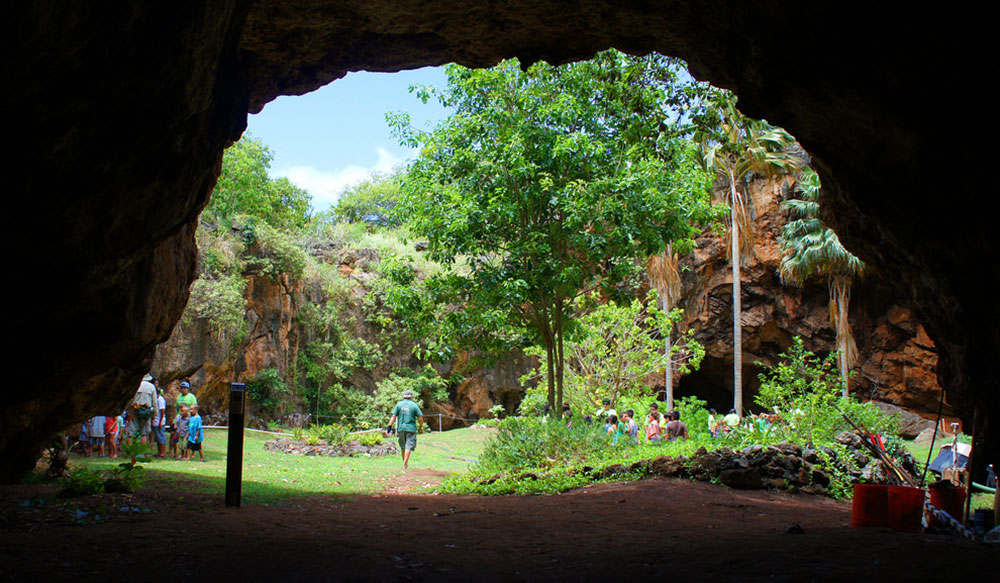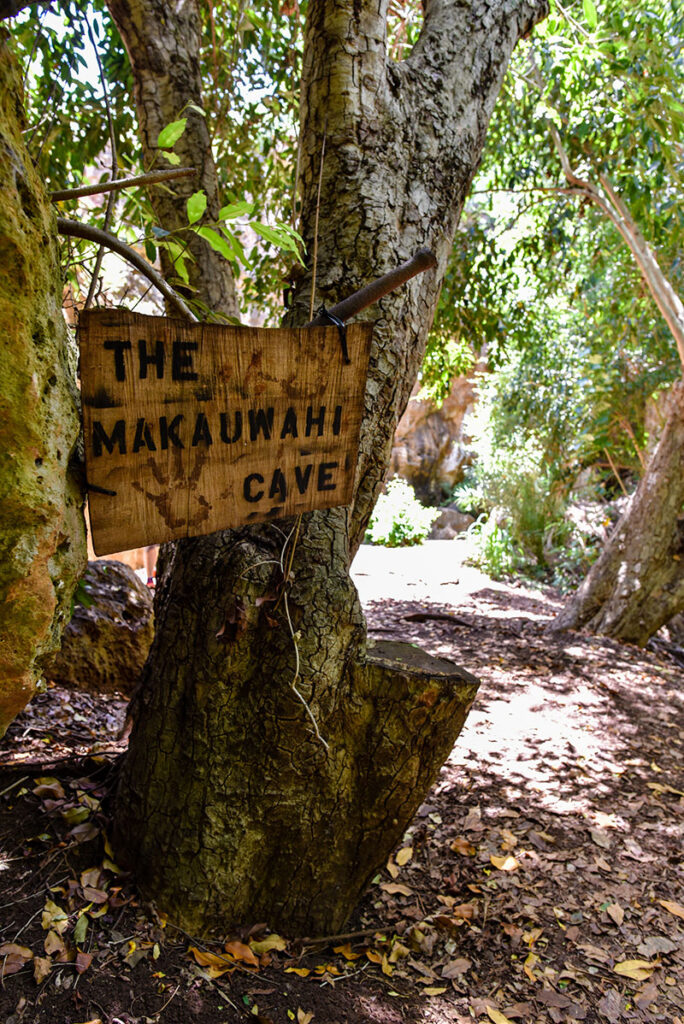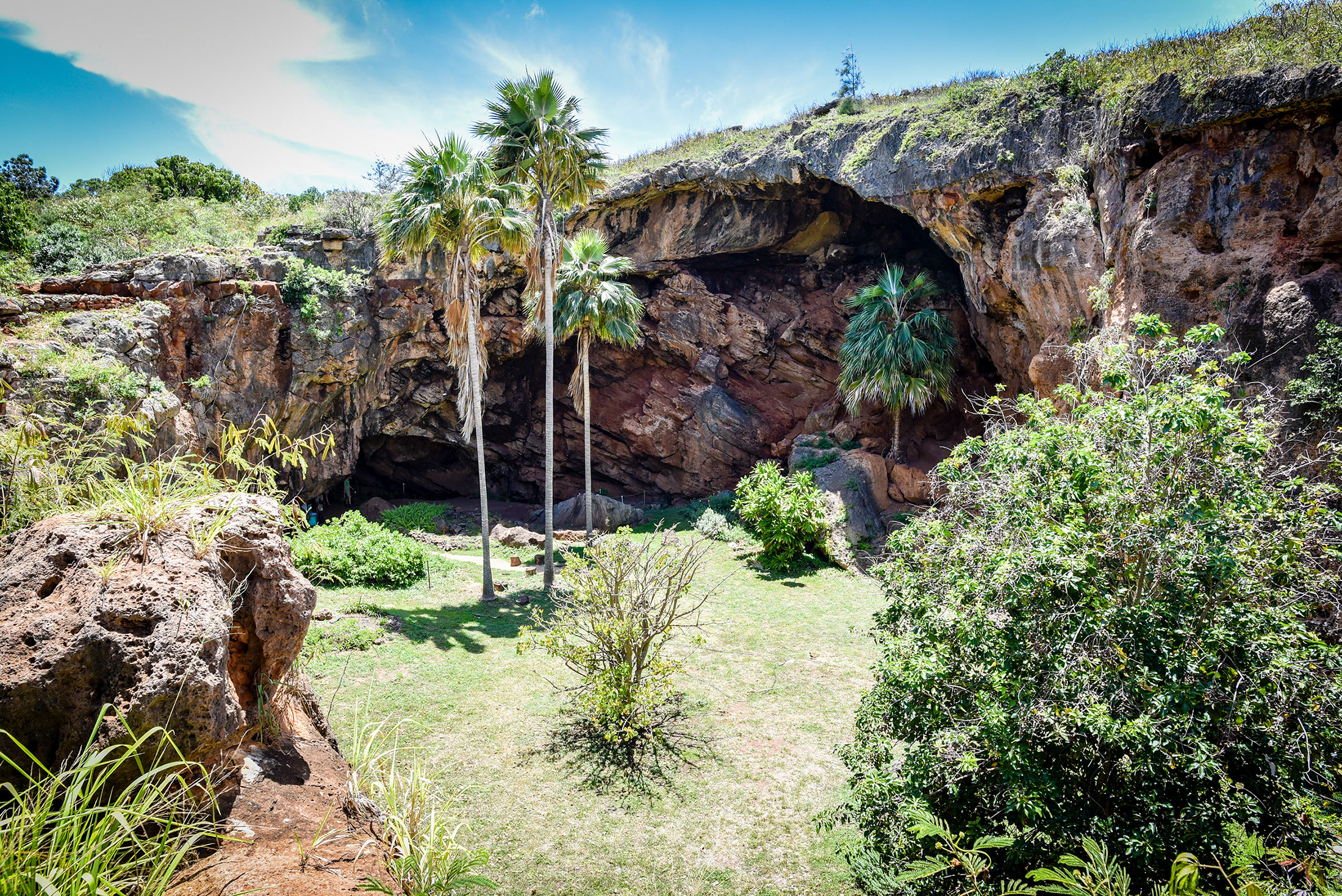Makauwahi Cave in Poipu – An Indiana Jones Type of Adventure
Posted on: 04/2/2024
The Makauwahi Cave Reserve in Poipu is one of Kauai’s hidden archeological gems. A fantastic activity for kids, the 17-acre ancient archeological site, with a huge limestone cave as the main attraction, was home to many now extinct species including the turtle jawed moa-nalo bird and the blind and flightless Kaua‘i mole duck.
It’s the kind of site that archeologists drool over. Since the early 90’s, archeologists David Burney and Linda Pigott Burney, have been diligently studying the caves’ layers of sediment for clues of the past. The information they found hidden in the walls of the cave and through ground excavation has been phenomenal. They have discovered clues of floods, hurricanes, droughts, a huge tsunami, and extinct plants and fossils, all within the walls of the caves, the historical records contained in the walls of the caves contain information for the last 10,000 years of Kaua‘i’s history.
How to Get to Makauwahi Cave
There are two recommended ways to get there. An approximately two-mile hike from Keoneloa Bay (aka Shipwreck’s Beach) to the coastal trail on the Makawehi Cliffs leads to the sinkhole, which is located just after the CJM horse stable. The second way is by driving past the Hyatt on to Grove Farm’s private dirt road. Be prepared for a bumpy experience with a lot of potholes. Once there, either park at the horse stables or at Mahaulepu Beach and head towards the cliffs from the beach. The area is so isolated that most hikers are so preoccupied by the stunning coastal views of Mahaulepu Beach and the shimmering Pacific Ocean to notice a trail leading between some ironwood trees to the cave.
Finding the opening to the sinkhole can pose a challenge, and finding it open for the public to enter can also be part of the challenge. Getting into the sinkhole is the next challenge, which requires a person to get into a low crawl for several feet until they are able to stand in the cave. The opening of the cave opens up into a gloriously green amphitheater with endemic Hawaiian plants being cultivated that were once part of the sinkholes natural landscape.
There are two caves, the north cave and the south cave. The north cave is a giant fossil formed over 400,000 years. 7,000 years ago, the cave’s central room collapsed, creating a freshwater lake. Clues of pre-contact Hawai‘i and fossil evidence of dead plants and animals, including 45 species of bird life, were preserved in the ancient lake and are only being discovered today.
The sensitive geology of the south cave means that the opening is the furthest a person can venture into the cave. Some of Hawai‘i’s rarest creatures, such as blind cave invertebrates, pale amphipods and isopods, and the eyeless cave spider, live in the cave and adjoining lava tubes.

Free Guided Tours
The best way to see Makauwahi Cave is through a free guided tour, which is held daily from 10 am to 4 pm. Knowledgeable volunteer guides walk visitors around the large amphitheater like sinkhole, pointing out interesting fossils and artifacts. The experience of seeing Makauwahi Cave is rich in history and information, it’s impossible not to appreciate Mother Nature’s splendor when standing within a sinkhole that was once teeming with wildlife and foliage that have now gone extinct.
After exploring the Makauwahi Cave, a quick jaunt over to the nearby Mahaulepu Beach for a beach stroll or visit to the nearby tortoise farm can be just what is needed to complete another perfect day on beautiful Kaua‘i! Looking for a place to stay on Kauai? Check out our vacation rentals!
For more information: http://www.cavereserve.org/



